I have a slight problem with my R coursework.
I have made a following dataset:

Now I'm going to plot the values based on this dataset using the following command:
plot(x ~ Group.1, data = jarelmaks_vaikelaen23mean,
xlab = "Vanus", ylab = "PD", main = "Järelmaks ja väikelaen")
After that, I'm creating a glm model using the following command. The difference is, that now I'm using an original dataset (the values of the dependent values are 1/0).

GLM command:
jarelmaks_vaikelaen23_mudel <- glm(Default ~ Vanus.aastates + Toode,
family = binomial(link = 'logit'), data = jarelmaks_vaikelaen_23)
Now, I'm trying to predict the values using my model.
predict(jarelmaks_vaikelaen23_mudel,data.frame(Vanus.aastates=x),type = "resp")
Unfortunately, I get a following error message:
Error in data.frame(Vanus.aastates = x) : object 'x' not found
Can you give me some ideas, how to solve this problem or explain, how this predict() command works or smth?